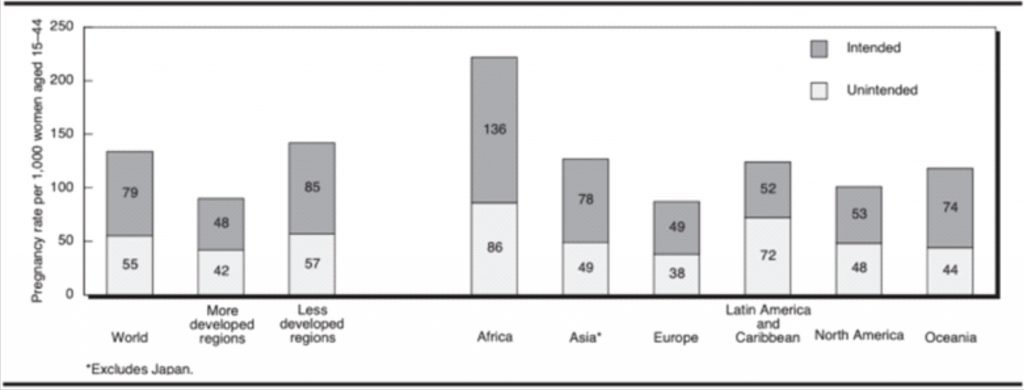Current Affairs (13th March 2021)
2001 FO32
CONTEXT:
- On 21 March 2021, the largest asteroid called 2001 FO32 predicted to pass by Earth and it won’t come closer than 2 million km to Earth, but it will present a valuable scientific opportunity for astronomers who can get a good look at a rocky relic that formed at the dawn of our Solar System.

Speed & distance
- For comparison, when it is at its closest, the distance of 2 million km is equal to 5¼ times the distance from Earth to the Moon.
- Still, that distance is close in astronomical terms, which is why 2001 FO32 has been designated a “potentially hazardous asteroid”.
- During this approach, 2001 FO32 will pass by at about 124,000 kph – faster than the speed at which most asteroids encounter Earth.
- The reason for the asteroid’s unusually speedy close approach is its highly eccentric orbit around the Sun, an orbit that is tilted 39° to Earth’s orbital plane.
- This orbit takes the asteroid closer to the Sun than Mercury, and twice as far from the Sun as Mars.
- As 2001 FO32 makes its inner solar system journey, the asteroid picks up speed.
- Later, the asteroid slows after being flung back out into deep space and swinging back toward the Sun. It completes one orbit every 810 days (about 2¼ years).
Studying the visitor
- The March 21 encounter will provide an opportunity for astronomers to get a more precise understanding of the asteroid’s size and albedo (i.e. how bright, or reflective, its surface is), and a rough idea of its composition.
- When sunlight hits an asteroid’s surface, minerals in the rock absorb some wavelengths while reflecting others.
- By studying the spectrum of light reflecting off the surface, astronomers can measure the chemical “fingerprints” of the minerals on the surface of the asteroid.
- Over 95% of near-Earth asteroids the size of 2001 FO32 or larger have been discovered, tracked, and catalogued.
Dandi March
CONTEXT:
- With the Prime Minister flagging off the ‘Padyatra’ (Freedom March) from Sabarmati Ashram, Ahmedabad and inaugurating the curtain raiser activities of the ‘Azadi Ka Amrut Mahotsav’ – a series of events will be organised by the Government of India to commemorate the 75th Anniversary of India’s Independence launched 75 weeks before 15 August 2022 on 12 March 2021, the National Cadet Corps has taken upon itself to launch a nationwide action plan to promote one social activity every month commencing from March 2021.
- The 24-day march from March 12 to April 5, 1930 was a tax resistance campaign against the British salt monopoly.
- Based on Gandhi’s principle of non-violence or Satyagraha, the march marked the inauguration of the civil disobedience movement.
- The Dandi march was easily the most significant organised movement against the British Raj after the non-cooperation movement of the early 1920s.
- In all the attention that it drove from the national and international media and world leaders, it was truly a turning point in the Indian Independence movement.

Why did Gandhi call for the Dandi March?
- The 1882 Salt Act gave the British a monopoly in the manufacture and sale of salt. Even though salt was freely available on the coasts of India, Indians were forced to buy it from the colonisers.
- The British government, including the Viceroy Lord Irwin too did not take the prospect of a campaign against the salt tax too seriously.
- Addressing a massive gathering in Ahmedabad on March 8, Gandhi declared his decision to break the salt laws.
Significance
- The popularity gained by the march shook up the British government.
- Gandhi proceeded to Dharasana salt works from where he was arrested and taken to the Yerawada Central Jail.
- As Gandhi broke the salt laws in Dandi, similar acts of civil disobedience took place in other parts of India.
- In Bengal, for instance, volunteers led by Satish Chandra Dasgupta walked from Sodepur Ashram to the village of Mahisbathan to make salt.
- K.F Nariman in Bombay led another group of marchers to Haji Ali Point where they prepared salt at a nearby park.
- The illegal manufacture and sale of salt was accompanied by the boycott of foreign cloth and liquor.
- What started as salt satyagraha soon grew into mass satyagraha. Forest laws were flouted in Maharashtra, Karnataka and the Central Provinces.
- Peasants in Gujarat and Bengal refused to pay land and chowkidari taxes. Acts of violence too broke out in Calcutta, Karachi and Gujarat, but unlike what happened during the non-cooperation movement, Gandhi refused to suspend the civil disobedience movement this time.
- The Congress Working Committee decided to end the Satyagraha only in 1934. Even though it did not immediately lead to self rule or dominion status, the Salt Satyagraha did have some long term effects.
Green Crematoria
CONTEXT:
- Minister of Science & Technology, Earth Sciences and Health & Family Welfare inaugurated four pyres of the Green Crematoria at Delhi’s Nigam Bodh Ghat Crematorium. He also inaugurated three new pyres run by Indraprastha Gas Limited
- According to the him, exceedingly high concentration of air emissions with respect to particulate matter, and other harmful gases have been measured in regions around the crematoria.
- CSIR-National Environmental Engineering Research Institute (NEERI) has developed a technology know how to mitigate air pollution from Open Pyre Green Crematoria’s.
Problem of air pollution and its solutions:
- Air Pollution has become a grave problem in India with more than 120+ cities falling under non-attainment category as per the National Green Tribunal.

- Delhi has about 56 traditional cremation grounds where Hindus cremate bodies by burning massive piles of firewood in the open, billowing out clouds of black smoke into the sky.
- The technology installed at VIP Pyre 3,4,5,6 comprises Fume collection and handling, Processing/cleaning, Utilities and Waste Handling systems.
- The system is designed with an efficient scrubbing system offering reduced emission of smoke, oil/greases, hydrocarbons, and particulates etc., with ease of recycle and disposal of scrubbed liquid and solids.
- Such technology helps to reposition our existing heritage by adopting clear methods for achieving our national and global commitments towards the environment.
Way Ahead:
- The present emission control system with slight design modifications,can be extended to LPG/CNG and Diesel crematoria to future reduce the emission from these systems.
- Such innovation can also be applied to mitigate dispersed air pollution emitted from unorganized and informal industrial sectors like bakeries, namkeen making, or application areas, where wood is being utilized as a primary source of energy.
- In the recently announced General Budget 2021, a lot of emphasis has been given to allocate resource to mitigate the growing ambient air pollution related problem in India.
- With such green initiatives, a lot can be achieved in improving the air pollution index in the National Capital and scientists from CSIR-NEERI can play a major role in that.
- Central Government has already been working for improving the air quality index in 120 cities across the country.

Unintended pregnancies
CONTEXT:
- Recently, UN sexual and reproductive health agencyin collaboration with Avenir Health, a global health organization published United Nations Population Fund (UNFPA) report.The study was conducted in 115 low- and middle-income countries in January 2021.
Findings:
- 12 million women in 115 countries lost access to family planning services due to disruptions caused by the COVID-19 pandemic.
- Supply chain problems, mobility restrictions and fear of seeking health services contributed to this massive disruption for millions of women.
- The number of unintended pregnancies could be as high as 2.7 million at the higher end of projections, or as low as 500,000 at the lower end of projections.
- These latest figures come as many countries, particularly high-income nations, show early signs of steeply declining birth rates.
- The projections showed that family planning services were largely disrupted in April and May of 2020.
- An estimated 12 million women faced this disruption for a duration of 3.6 months on an average.
- April 2020 estimates by the same partners had projected that 47 million women in 114 low- and middle-income countries would be unable to use modern contraceptives if the lockdowns or related disruptions continue for an average of 6 months. They had predicted it would result in seven million unintended pregnancies.
- Impact of unintended pregnancies:great strain on families, which were already struggling under pandemic-related financial burdens, increased maternal morbidity and mortality, as well as rising numbers of unsafe abortions.

Acting swiftly
- Fortunately, quick action has helped many health systems to maintain or restore essential health services, including contraceptives
- Even amid rising costs and supply chain constraints, it was able to procure and deliver contraceptives and other reproductive health supplies, as well as personal protective equipment for health workers.
- Creative efforts, such as using a ride-hailing app to deliver contraceptives, SMS outreach and targeting family planning counselling to quarantine centres, also helped maintain or restore services.
- The short message service (SMS) programme is part of a partnership between UNFPA, the World Food Programme (WFP).

